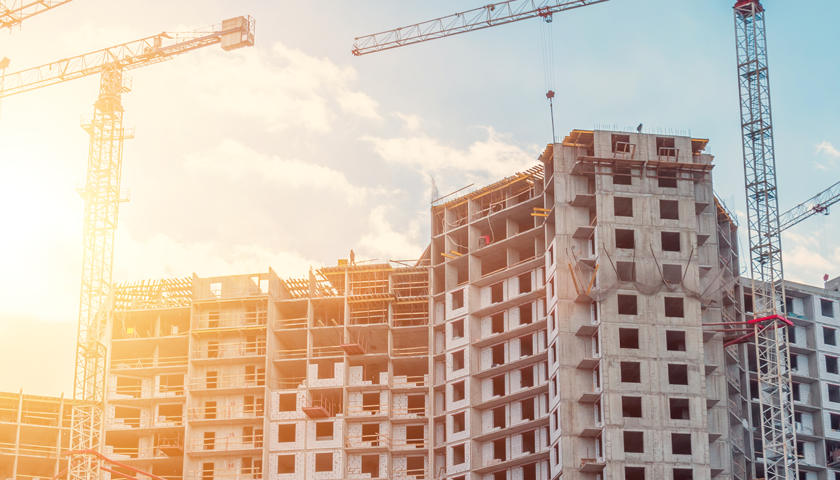The COVID-19 era presents a radically transformed real estate market, with preferences changing to accommodate new market realities. With work-from-home a viable option even after the lockdown, many future homebuyers will shift to the peripheral areas for bigger homes and a better lifestyle – at more affordable prices.
The previous ‘gold standard’ of Indian housing – the walk-to-work / short drive to work, by definition only in and around central corporate workplace hubs – may shed some its popularity for the middle class. Central locations would retain their allure for HNI / C-suite buyers who can afford larger spaces there.
The work-from-home concept may become the next fulcrum for homebuying decisions, where the walk-to-work option had held the longest sway. This, and millennials’ new-found preference for buying rather than renting homes, are among the most prominent new residential real estate trends of the COVID-19 era. With the rise of the WFH culture, many may now prefer to live in more spacious and cost-effective homes in less central areas. While sufficient supply currently exists in most of the peripheries, this new demand will eventually also dictate fresh supply. Bigger homes, affordable prices and more generous open spaces in the peripheral areas will draw demand from tenants and buyers alike.
Central vs Peripheral Areas: The Price Difference
Apart from changing real estate consumer preferences in a strengthening WFH environment, affordability is an enduring concern, especially to the backdrop of a faltering economy and job loss/uncertainty. The peripheral areas are more affordable both from a rental and purchase perspective.
Here’s the cost difference for India’s three largest economic dynamos – MMR, NCR and Bengaluru.
Mumbai Metropolitan Region (MMR)
- In MMR, the average price for a standard 1,000 sq. ft. property in areas within city limits is approx. Rs 1.85 Crore, against Rs 55.35 Lakh in the peripheral areas – a 70% cost difference. Micro-markets within city limits considered include Andheri, Vile Parle, Goregaon, Malad, Kandivali, Chembur, Wadala, Ghatkopar, Vikhroli, Powai, Mulund, etc. Peripheral areas include Kalyan, Bhiwandi, Dombivli, Mira Road, Vasai, Virar, Thane beyond Kasarvadavali and Owale Panvel, Ulwe, Taloja, etc.
- Average monthly rent for a standard 2BHK home in areas within city limits is approx. Rs 45,800, against Rs 12,500 in the peripheries.
National Capital Region (NCR)
- In NCR, the average price for a standard 1,000 sq. ft. property in areas within city limits is approx. Rs 88.20 Lakh, against Rs 37.50 Lakh in the peripheral areas – a 57% cost difference. Micro-markets within city limits considered include Vaishali, Vasundhara, Indirapuram, Noida, Golf Course Ext. Road, Sushant Lok, Dwarka Expressway, New Gurgaon, Dwarka, etc. Peripheral areas include Ghaziabad-Rajnagar Extension, Faridabad, Greater Noida, Sohna, Bhiwadi, Bahadurgarh, etc.
- Average monthly rent for a standard 2BHK home in areas within city limits is approx. Rs 22,000, against Rs 9,500 in the peripheries.
Bangalore
- In Bangalore, the average price for a standard 1,000 sq. ft. property in areas within city limits is approx. Rs 69.80 Lakh, against Rs 43.50 Lakh in the peripheral areas – a 38% cost difference. Micro-markets within city limits considered include Sarjapur Road, HSR Layout, Kudlu Gate, Singasandra, Hebbal, Jakkur, Yeswanthpur, Jalahalli, Whitefield, Marathahalli, KR Puram, J P Nagar, BTM, Jayanagar, Banashankari, Kodigehalli, etc. Peripheral areas include Attibele, Electronic City, Yelahanka, Doddaballapura Road, Varthur, Budigere Cross, Kanakapura Road, Tumkur Road, Mysore Road, Kogilu Cross and International Airport Road (Bellary Road).
- Average monthly rental for a standard 2BHK home in areas within city limits is approx. Rs 18,500, against Rs 9,500 in the peripheries.
Rent vs Buy: What the Data Says
The rent vs. buy debate involves multiple highly subjective factors. However, since millennials are increasingly interested in homeownership post-COVID-19, it is worth calculating what works better for most in the current circumstances.

Our data reveals that the 5-year rental outgo for tenants living within city limits is equivalent to 27-52% of the total property cost in the peripheries of the top 3 cities (MMR, NCR and Bangalore). Therefore, there is a strong rationale for homeownership in the peripheries. We have considered the total annual rental outgo for 5 years + 3.5% annual rental appreciation.
- In MMR, the average monthly rental outgo in city-limit areas is INR 45,800. For five years, this equals nearly INR 28.66 lakh (including standard rental escalation for this period). This is almost 52% of the total average cost of a property in MMR’s peripheral areas.
- In NCR, the average monthly rental outgo in city-limit areas is INR 22,000. For five years, this equals nearly INR 13.77 lakh (including standard rental escalation for this period). This is almost 37% of the total average cost of a property in NCR’s peripheral areas.
- In Bangalore, the average monthly rental outgo in city-limit areas is INR 18,500. For five years, this equals nearly INR 11.57 lakh (including standard rental escalation for this period). This is almost 27% of the total average cost of a property in the peripheral areas.
Also, the current home loan interest rates are at an all-time low, averaging around 7.15-7.8% – with the possibility of more reduction as the RBI recently cut repo rates even further.
This article is contributed by Anuj Puri, Chairman, ANAROCK Property Consultants.
(The views expressed here are solely those of the author and do not necessarily represent or reflect the views of RoofandFloor)






Research well and keep yourself abreast of current market conditions before choosing a property. Make sure that you have a clear idea of property prices and rate of appreciation. As a rule of thumb, home loan EMI should not exceed 35-40% of your total income.
Under a lockdown to flatten the curve of the Coronavirus spread in the country, the Indian government, starting March 25, 2020, imposed severe restrictions on the movement of its 1.3 billion people. Apart from a complete halt to work, the lockdown, which remained in force till June 7, also led to an unexpected outcome – thousands of migrant workers who lost their incomes overnight, started returning to their native villages, from India’s major cities, amid a complete halt of transport mediums. Together, these two factors would be detrimental to real estate, which is largely dependent on this workforce for the implementation of its plans.
In NCR, the average price for a standard 1,000 sq. ft. property in areas within city limits is approx. Rs 88.20 Lakh, against Rs 37.50 Lakh in the peripheral areas – a 57% cost difference. Micro-markets within city limits considered include Vaishali, Vasundhara, Indirapuram, Noida, Golf Course Ext. Road, Sushant Lok, Dwarka Expressway, New Gurgaon, Dwarka, etc. Peripheral areas include Ghaziabad-Rajnagar Extension, Faridabad, Greater Noida, Sohna, Bhiwadi, Bahadurgarh, etc.